
|
Arctic breeding birds arrive on their nesting
grounds in spring when weather conditions may still be extreme
(low temperature, snow). The brief arctic summer requires that
they begin breeding as early as possible to take advantage of
the ephemeral abundance of food to feed young. However, the extent to which extreme spring weather may affect the breeding schedule varies according to the severity of the arctic environment. Even at the same latitude, some arctic environments are more severe than others. Failure to adjust to the local phenology results in drastically reduced reproductive success. Hormone-behavior adaptations that maximize survival and reproductive success in diverse environments of the Arctic are the focus of this proposal. It has been shown that the interrelationships of testosterone and territorial aggression as birds arrive on the arctic breeding grounds vary according to species and locality. In some, territoriality is extremely brief following which birds become apparently refractory to the effects of testosterone. Others are territorial throughout the breeding season, but the dependence of these behaviors upon activation by testosterone is lost. Territorial aggressive behavior of four arctic breeding passerines will be compared at different sites from sub-arctic (longer breeding season) to high-arctic (the most brief breeding season). The temporal patterns of testosterone in relation to patterns of aggressive behavior and the effects of manipulation of testosterone level will also be determined. In this way it is possible to determine the ecological bases of different types of territorial behavior and interrelationships with testosterone in diverse arctic environments. We will also compare adrenocortical responses to stress in these species at different arctic sites. Extensive data now indicate that arctic birds modulate the secretion of corticosterone in response to a standardized capture stress protocol as a function of local environmental conditions and stage in the breeding cycle. This is thought to be an adaptation to allow onset of territorial behavior and breeding in the face of potentially stressful conditions. Behavioral and physiological responses to corticosterone treatment are diminished within these populations and experimental comparisons will be made to indicate how endocrine mechanisms may vary in relation to arctic habitat and other ecological factors. Finally, laboratory experiments will
assess the number and distribution of receptors for testosterone (and
possible metabolites) and corticosterone in the central nervous
system, as well as activity
of steroid metabolizing enzymes. This unique approach of field
and laboratory experiments to compare types of territorial behavior
in different arctic environments, effects of hormones and stress,
and ultimately the related distribution of hormone receptors
in the brain will not only pinpoint specific adaptations for
birds breeding throughout the Arctic, but will have significance
for the regulation of reproductive processes of vertebrates in
general. This basic information will also provide a unique battery
of techniques for assessment of the effects of global climate
change on arctic animals in the future.
|
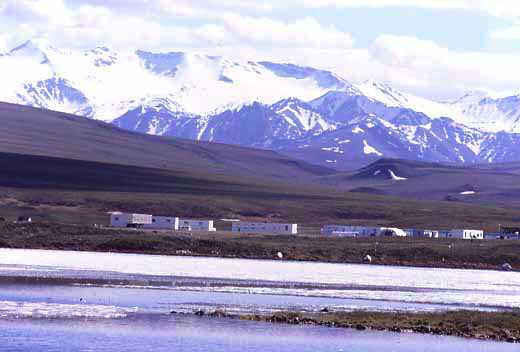 |
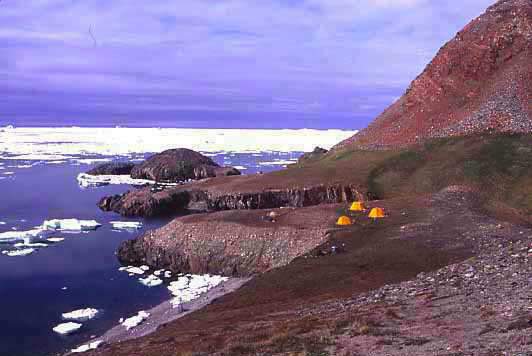 |
Birds studied for this project:
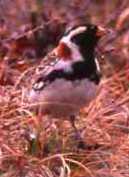
|
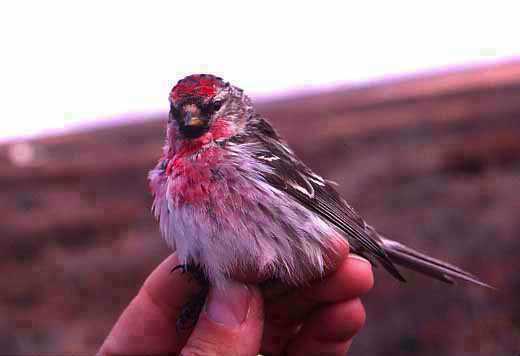 |
 |
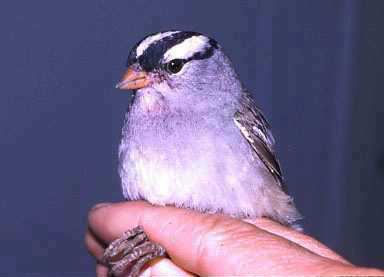 |
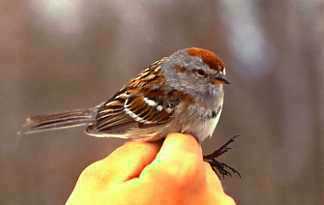 |
| Lapland Longspur | Redpoll | Snow bunting | Gambel's White-Crown Sparrow | Tree Sparrow |